Bunnies are super cute no matter what their shape or size. Rabbits come in a variety of breeds and colors that make them unique.
Mixed color combinations can often lead to rabbits with distinct features and interesting markings.
Black and white rabbit breeds offer fun blends of fur for rabbit lovers and owners.
In this article, we’ll take a close look at rabbit breeds that come in a mix of black and white fur.
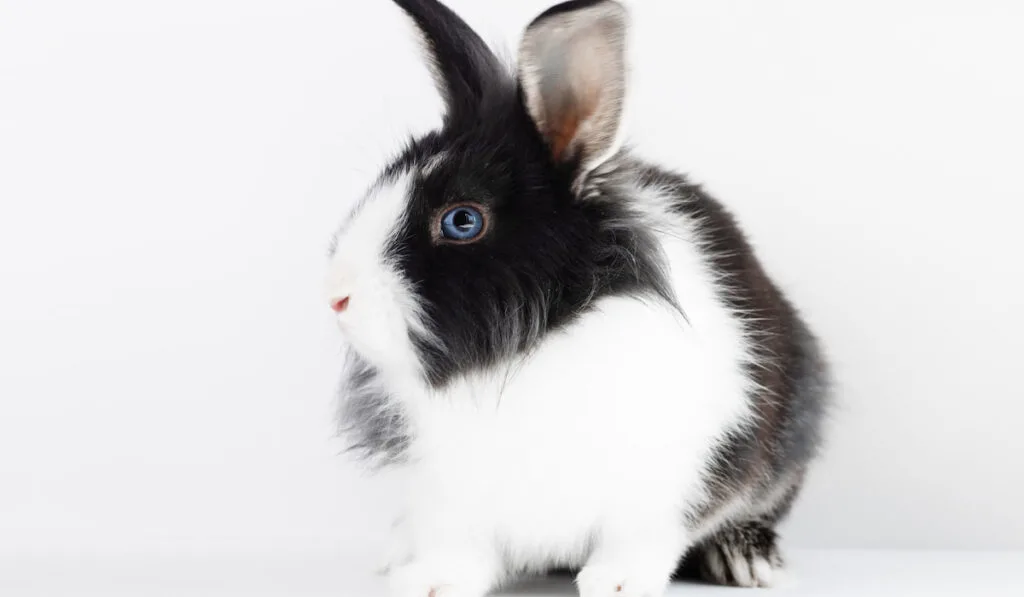
Table of Contents
1. Dutch Rabbits
While they are called Dutch rabbits, this breed actually originated in England.
The Dutch rabbit breed is the first rabbit breed accepted by the National Pet Stock Association (NPSA). It was developed from the Brabancon breed, which originated from Belgium.
They come with a white saddle on their back and a white collar around their neck. They also have a white blaze on their nose – one way to quickly recognize them.
The American Rabbit Breeders Association (ARBA) recognizes 7 Dutch rabbit colors. These colors are mixed with white, and they include black, chinchilla, grey, tortoise, blue, chocolate, and steel.
Dutch rabbits have flyback fur. If you brush their fur away from the direction of growth, it returns to its normal position.
Dutch rabbits are balanced and rounded in shape. They tend to be small but are not dwarf sized.
On average, Dutch rabbits weigh 3.5-5.5 pounds and live for 8-10 years.
Dutch rabbits are cute, intelligent, friendly, and easygoing.
However, individual differences come into play in their behaviors. You will need to give this rabbit time to settle in and earn its trust.
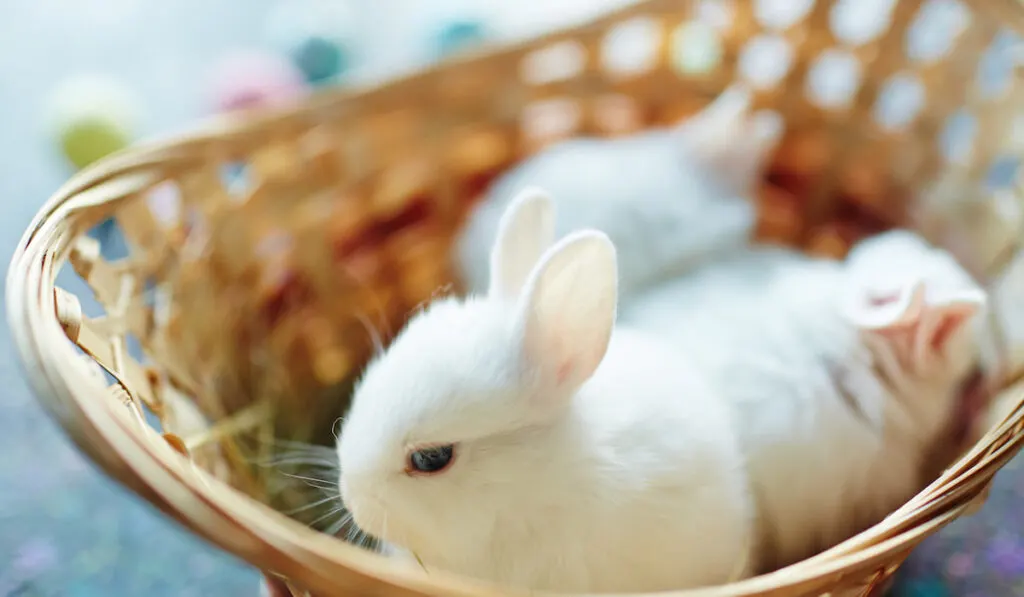
2. Dwarf Hotot
Dwarf Hotots was created from a cross between the Netherland Dwarf and the White Hotot in Germany.
Members of this breed are small, typically weighing 2.5-3.5 pounds and living for 7-10 years.
Dwarf Hotots have compact bodies and white fur colored with black eye markings.
They have wide shoulders, round heads, and rounded hindquarters. Their ears are short and thick, and they add to how adorable they are.
Dwarf Hotots have rollback fur. The fur will remain upright even when you stroke it. Dwarf Hotots also molt seasonally, most commonly in the spring.
When Dwarf Hotots start molting, you should brush them frequently to keep them from ingesting hair.
Since rabbits have sensitive stomachs, consuming their own hair in large amounts can be harmful.
Dwarf Hotots are friendly, affectionate, playful, and perhaps energetic. They are usually not as active as many other breeds, but they are wonderful companions.
If you intend to keep Dwarf Hotots, ensure you interact with them frequently, so they will become accustomed to human presence.
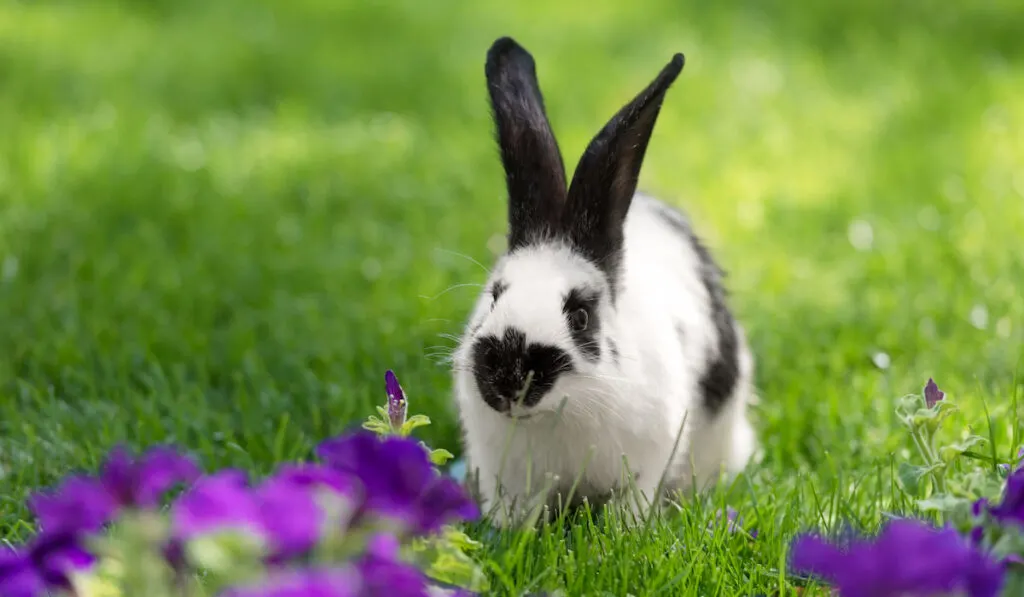
3. English Spot
Being one of the oldest rabbit breeds, the English Spot has been around since the mid-19th century.
They originated in England and may have been created from a crossing of the Checkered Giant and the English Butterfly.
The English Spot was developed for the sole purpose of being a show rabbit.
The coat of an English Spot is white and marked. The markings could be any of 7 different colors recognized by the ARBA.
The colors include black, grey, chocolate, blue, gold, lilac, and tortoise.
This breed is a medium-sized breed with an average weight of 5-8 pounds and a lifespan of 5-9 years.
Members of this breed have full-arch bodies, vertical ears, round hips, and slender legs. They have flyback fur that molts throughout the year.
English Spots are suitable pets for first-time owners, children, seniors, and singles. They are gentle, well-mannered, energetic, curious, and friendly.

4. Checkered Giant
The Checkered Giant, also known as the Giant Papillon, is one of the biggest breeds. On average, members of this breed weigh 11-13 pounds.
Checkered Giants are natives of France, particularly the Lorraine region. Their ancestry traces back to the Flemish Giant breed.
Checkered Giants have short white fur with black markings. Some of the markings are seen on their ears; they have colored ears. The nose of a
Checkered Giant has a butterfly-like marking. Also, their cheeks and eyes are colored, and a black stripe runs down their back.
Members of this breed are slender, muscular, and have long bodies. Their backs are straight, their hindquarters are long and rounded, and they have strong legs.
Getting Checkered Giants with the perfect markings is not really clear-cut. You’ll usually get a mix of well-marked, plain-colored, and partially marked offspring.
Checkered Giants are reported to be calm, gentle, energetic, good-natured, and playful. They usually need to exercise their bodies a lot. So, take this into consideration if you keep one or intend to.
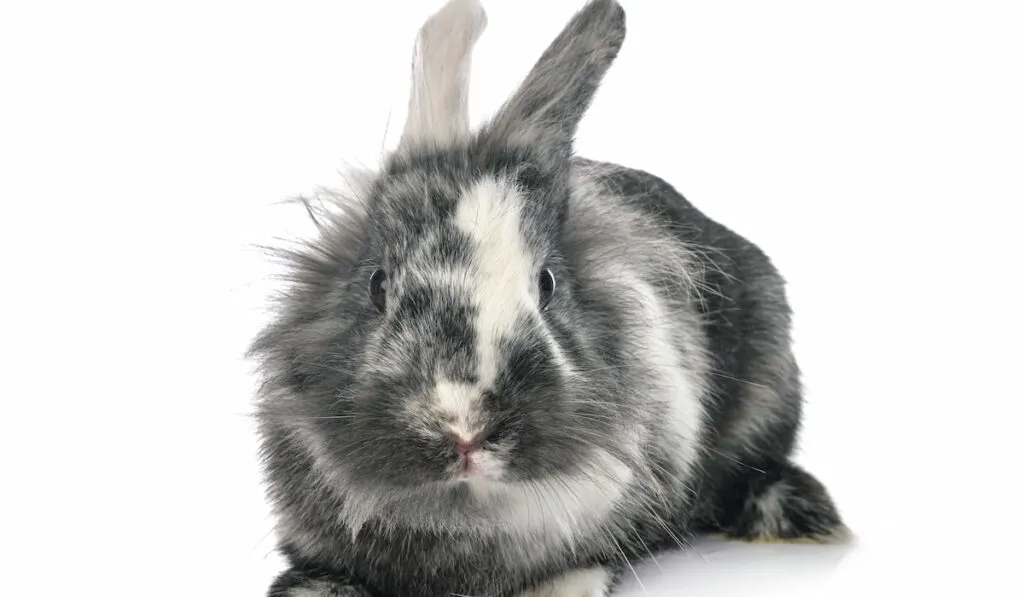
5. Lionhead Rabbits
Lionhead rabbits are notable for the furry mane around their heads.
Lionhead rabbits originated in Belgium, where they were developed by crossing 2 dwarf breeds. While crossbreeding, a mutation occurred and led to the characteristic mane. The mutated gene is now referred to as the mane gene.
This breed is a fancy one. Lionheads are rounded, compact, and their mane is usually 2 inches long.
They come in various colors, including black & white, tortoise, chocolate & seal, Siamese sable, and ruby-eyed white.
They are a breed of rabbits recognized by the ARBA and the British Rabbit Council.
Lionhead Rabbits are small, with an average weight of 2.5-3.75 lbs. and a life expectancy of 7-9 years.
The black-and-white variant usually comes with a white coat and black markings. The black markings include rings around their eyes, black ears, and black spots in various parts of their back.
Lionheads are well-mannered, easy to train, friendly, and gentle. But they can also be timid, so handle them with care.
Do not expose them to frightening situations, or they might become aggressive.
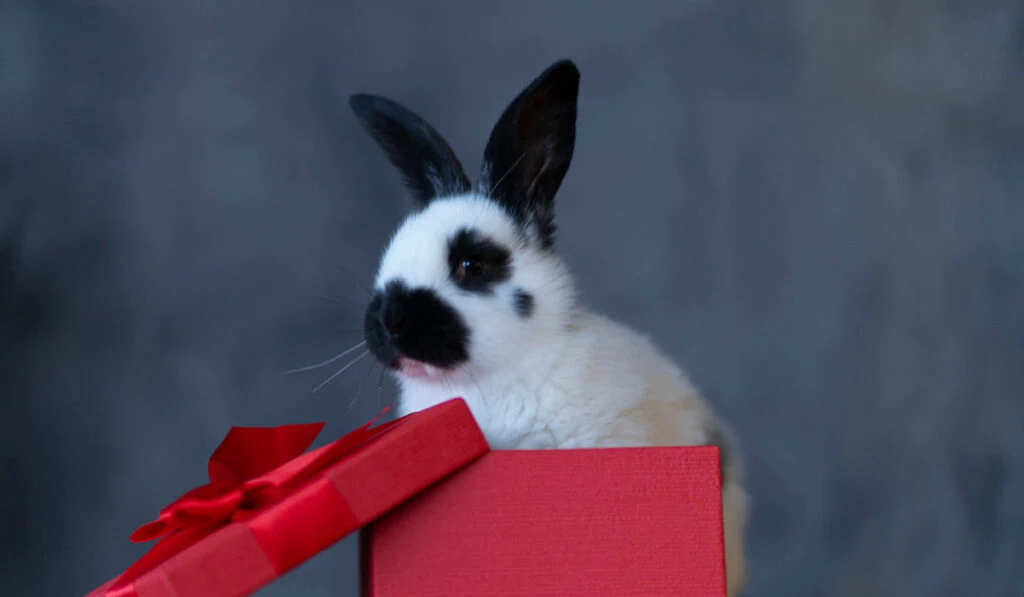
6. Czech Spot
While they are marked like Checkered Giants, Czech Spot rabbits are medium-sized like the English Spot. On average, they weigh 6-8 pounds.
The Czech Spot is the first breed of rabbit created in Czechoslovakia. They come in agouti, black, tri-colored, and blue markings.
Czech spots have black ears, black rings around their eyes, and a black dorsal stripe. They also have a butterfly-like marking on their nose.
7. Mellerud Rabbits
Like the Czech Spot, Mellerud Rabbits are European rabbits. Mellerud rabbits are a breed that originated in Sweden around the late 19th century.
Mellerud rabbits have short and fine coats. Their heads are typically black with a white nose. The forelimbs and chest region are typically white.
In some cases, only one of their 2 forelimbs would be white. The hindquarter and hind limbs of Mellerud rabbits are almost always black.
Melleruds have pointed black ears, and their eyes are a bit large and alert. They are curious, calm, good-natured, and lively. But like other rabbits, you have to be gentle with them.
Mellerud rabbits have elongated bodies with a fine head.
Male Melleruds appear more compact than females. They also have rounder heads and thicker muzzles than the females.
Even with the differences, both genders weigh the same at an average of 6.6-7.7 pounds and live for 5-8 years.
As early as 1881, Mellerud rabbits were kept for meat and for their fur. This may have contributed to the reduced population in the 1900s.
In fact, many people thought they were extinct until some of them were found in the home of Edith Sjoskogen.
Mellerud rabbits were given the landrace status in 2011. Since the breed is critically endangered, breeders are working toward increasing their numbers.
As of 2013, there were only 160 registered Mellerud rabbits.
Resources
- https://www.petsial.com/black-and-white-rabbit-breeds/
- https://lafeber.com/mammals/dutch-rabbit-breed-info/
- http://www.bunnyhugga.com/a-to-z/breeds/giant-papillon.html
- https://www.petguide.com/breeds/rabbit/dwarf-hotot/
- https://www.petguide.com/breeds/rabbit/english-spot-rabbit/
- https://www.thesprucepets.com/lionhead-rabbits-species-profile-4788223
- https://lionheadrabbit.com/
- https://www.raising-rabbits.com/rabbit-breed-descriptions.html
- http://vetbook.org/wiki/rabbit/index.php/Czech_Spot
- https://www.petguide.com/breeds/rabbit/mellerud-rabbit/
- https://www.roysfarm.com/mellerud-rabbit/
